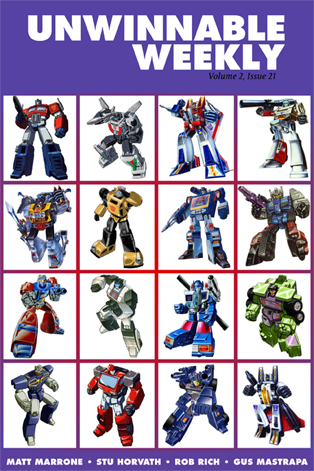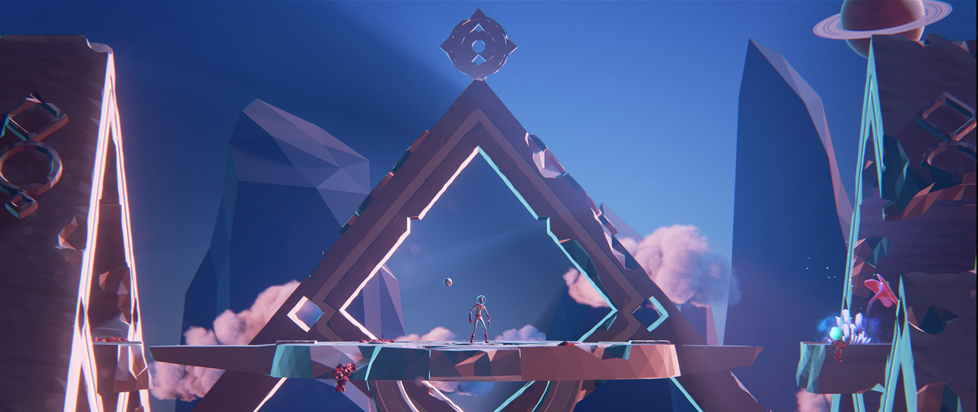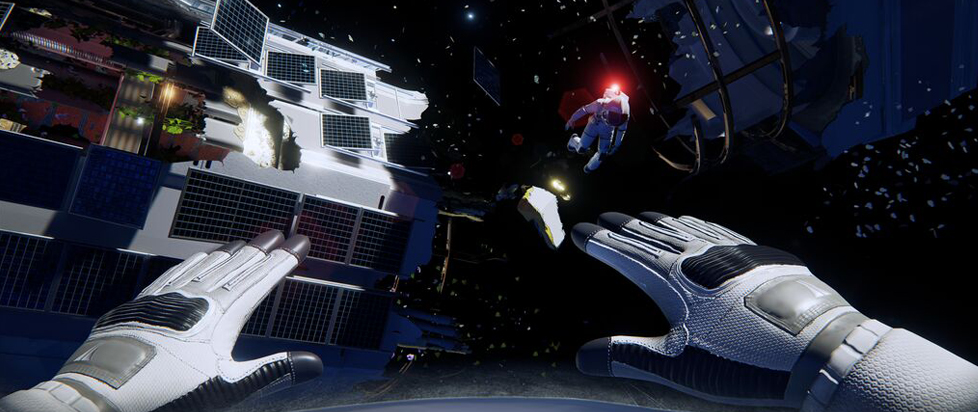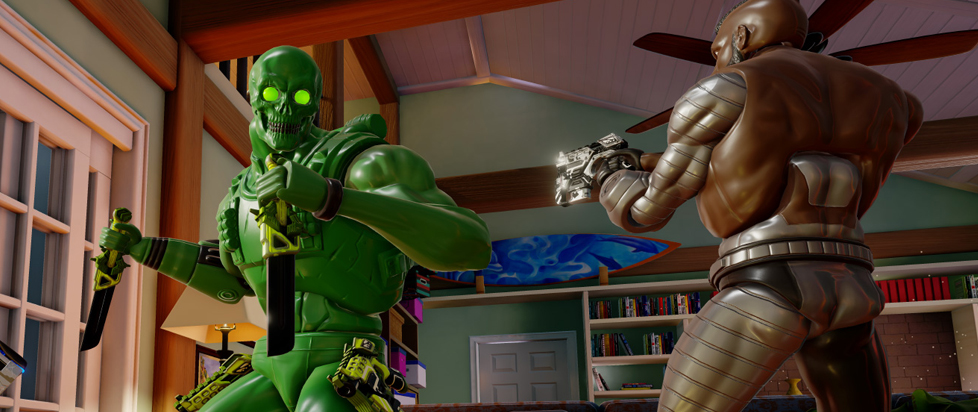
Revving the Engine: 404Sight
The following is a reprint from Unwinnable Weekly Issue Seventy Three. If you enjoy what you read, please consider purchasing the issue or subscribing.
This series of articles is made possible through the generous sponsorship of Epic’s Unreal Engine. While Epic puts us in touch with our subjects, they have no input or approval in the final story.
———
The debate over net neutrality – namely whether internet service providers could be allowed to prioritize some data transfers over others, for a price – came to a head earlier this year when the FCC voted to preserve an open internet.
Practically anyone who isn’t an internet service provider and their crony politicians can see how this would have been a bad thing. What isn’t necessarily obvious is the kind of effect the so-called fast and slow lanes the ISPs proposed would have had on how we collectively use the internet.
Enter 404Sight, a game that effortlessly marries the high concept of net neutrality with the mechanics of a 3D running and parkour game. You take the role of a hacker who, Tron-like, has entered the network. A special ping ability reveals hidden areas that can speed the player up or slow them down, the so-called fast and slow lanes of the net neutrality debate. As they become visible, it takes a bit of planning to plot a course through hazards used by the ISPs to throttle your progress.
Unlike other games profiled in this series, 404Sight is the product of a team of students gathered under the banner of Retro Yeti Games. Based out of the Master’s of Entertainment Arts and Engineering program at the University of Utah, the game represents their thesis project. The top-ranked graduate program was run like a studio simulation, requiring the team to create a game from conception to publication on a public platform.
Tina Kalinger, the game’s producer and community manager, explains that, “404Sight is a tongue in cheek game about the future of the internet. The title is our play on words, as the http error or 404 means “file not found” and “foresight” is the ability to plan for the future. We’re saying, “Foresight not found,” as in, we’re really not planning for the future of the internet very well. But we should.”
Retro Yeti Games was large for a student development team – 12 in all, consisting of three engineers, four artists and five producers/artists (including Kalinger), though those roles were loosely applied. Everyone had space to spread out and explore while developing the game. Work ran 18 months, from January 2014 until May 2015, during which time they created “an unsettling amount of inside jokes and memories involving nap time and robot piñatas.”
Tina was kind enough to take time out of working on this weekend’s GaymerX to tell me more.
Aside of Net Neutrality, What inspired the game?
Mirror’s Edge, definitely. Also Tron, Sonic, Temple Run, Apple stores, cyberpunk of all kinds, maybe a little ReBoot. We wanted to create a stark environment that was an abstract inside-the-computer kind of thing, but with a lot more neon.
What came first – the game or the net neutrality debate? How did the two entwine and inform each other over the course of the game’s development?
The debate, of course. If anyone’s been paying attention closely, the net neutrality arguments have been going on far longer than these last few years. It’s really heated up lately, though, especially because of Google’s arrival in the ecosystem, and it’s caused quite the ripple effect.
As for how it came to be the central theme of our game – we actually started with more of a thesis question, which was “Can hints be a mechanic?” We had the idea of some ability revealing information about a level fairly early on, and we went through several iterations and prototypes trying to find something that fit and influenced our design in the future.
That’s when we realized that net neutrality was a great theme, because it was something we strongly supported and we could use our existing concepts to provide players with an experience of what the internet might look like if ISPs had their way. What better way to showcase the speed of the internet than a runner?
Still, we didn’t want to oversaturate the game with the message, so from that point on we were always trying to find a good balance between gameplay and theme. Depending on who you ask, we have a fun game with a good message or a good propaganda piece with some okay gameplay mixed in.
Using endless running mechanics to commentate on Net Neutrality is as good an example of form mirroring a message as I’ve ever seen. How did the interplay between the conceptual and the mechanical come about?
Ha! First, I think I’ll have to clarify in case one of my teammates throws up their arms in exasperation – we don’t consider ourselves an endless runner. We call it a playground runner, sometimes, but we wanted to give players more tactical decisions and interactions with the game than what you typically find with endless runners. Plus, there’s no forced speed, the player controls a lot of their movement.
Anyway! That said, we’re quite proud of how well our mechanics mirror the message. As I mentioned previously, technically the mechanics came first and they fit the proposed theme so well that it just made sense to have them together. Once we had settled on net neutrality, though, we had to keep the message in mind more than I think we’d anticipated. We’d have moments where we’d ask ourselves, “What do the launch tiles have to do with net neutrality? Is it going to make sense to players?” And the resounding response (especially during finals week), was “Who cares!” But, we did care, and we tried to make it all work together in a cohesive way.
Was the symbolism immediately apparent, or discovered gradually over time?
The symbolism was immediately apparent, there’s no question about that. The whole point of a running game is to get up to speed and keep moving quickly, and that’s what people enjoy about the internet. Anything that slows you down once you’re going fast is going to frustrate you. Everything just clicked into place. The nomenclature of net neutrality lent itself well to our design, too. “Fast lanes” and “slow lanes” were pretty obvious, in that they affected the player’s movement speed. Sometimes we’d get into arguments on whether to use the net neutrality term for something (“data caps” for the projectiles that the looming ISP sends into the player’s path) but in that case, sometimes one of our early names stuck (“inhibitors”) whether it made sense or not. Some of the mechanics emerged over time as we looked for ways to iterate on the design, and that’s how we got the speed boost ability.
Discovering the ways that we’d accidentally utilized the message in our mechanics was always a delight.
What was the response to the game?
It depends on who you ask! Our friends, family, faculty and classmates were all incredibly supportive the entire time. We weren’t sure how the public at large would receive 404Sight, especially the Steam community, but the positive reviews and ratings rolled in from the moment we published and they really haven’t let up since. Most of the negative commentary we’ve received has been about technical issues or minor gameplay quibbles. It’s been immensely satisfying to hear all the compliments, especially since for most of the team it was our first published game. It helps that we were committed to make it 100% free and accessible to as many people as possible, because when people take issue with it, they usually shrug and say, “Eh! It’s free.”
Of course, there’s the people that dismiss the game as just another student project trying to be edgy and strikingly topical by plucking a theme from headlines with haphazard gameplay and a poorly defined visual style. As Taylor Swift would say, “haters gonna hate, hate, hate.” The whole point of this game was to learn about game development and create something we were proud of while supporting a cause we believed in and I’d say we succeeded. If we made some rookie mistakes or misapplied the message, well, we were students. We have a lot to learn.
Do you think games naturally lend themselves to this kind of activism/awareness campaign?
I’d like to think so! I may be a little biased, given how well our design and political message fit together. Still, I believe that creating interactive experiences in games around causes you care about can really help others access a point of view that might be hard for them to see in other mediums. It helps inspire empathy and raise awareness in general if you have a message that people can play and consume at their own pace, rather than have it presented to them in the more traditional ways that activism use. And it’s more fun! Would you rather play a game about global warming or read a pamphlet about it?
Why’d you chose UE4 to develop the game?
Lots of reasons. It gave us a lot of benefits that made developing 404Sight way easier, and I can confidently say it would not be the game it is today if we hadn’t used UE4. We used the blueprint system for 95% of the game and the integration it had with other programs made it an easy choice. It was an intuitive engine – so intuitive, in fact, that almost everyone on the team did level design and construction for the game. Even the non-technically minded.
We also knew it was going to be a big deal in the industry and we were casting our gaze on a horizon filled with job hunting, so it seemed like a smart move. Now that the team is mostly employed in the industry, thanks in no small part to the things we learned tinkering with the engine, I think it’s safe to say we made the right choice.
How did the Unreal Dev Grant come about? How did it change things?
We’d been posting out various technical questions in the Unreal forums pretty regularly, showing off our progress and getting community feedback, so it made sense to apply for the grants once they were announced. I think I turned to the team and said, “Hey, I’m gonna submit to this thing. Any objections?”
We didn’t think we’d get it, since we were a student project, but being selected as one of the first few recipients of the grant was a huge deal, both financially and professionally. It allowed us to pay our composers for their amazing work and take the game to a few awesome conventions to share it with as many people as we could. It also helped us pay for some t-shirts and stickers. Everyone knows you’ve officially made it as a developer when you have your own company’s sticker on your laptop. We also researched how we might port the game to other systems. Beyond that, it recouped some of the costs we’d incurred during development as poor grad students, like registering our company, and we had a nice team dinner just before we graduated.
I really appreciate – especially now, in hindsight – the flexibility of the Unreal Dev Grants, because it allowed us to apply the funds in ways we saw fit. Some would argue that’s irresponsible, but every developer has different needs and the grant was perfect for us. I’ve recommended applying to many developers and will continue to do so, because I think it’s a system that encourages creativity from all different sorts of developers. You don’t have to be a AAA studio or an indie rock star to receive funding, you just have to have a great project and not be afraid to show it off.
What are the plans for Retro Yeti in the future?
Play Dungeons & Dragons together once or twice a month, grab dinner whenever some of us happen to be in the same city and send random gifs or catch up on the still-functional team Slack. The reality is that most of the team spread out across the country and got some amazing jobs, and their NDAs and non-competes prevent them from doing any significant work on a new project. There is a second and very different game slowly inching forward through development, made by a portion of the team, but it’s way too early to say much about it. Real life kind of gets in the way of side projects, unfortunately, so for now we’re lying in wait and seeing what happens.
———
Stu Horvath is the editor in chief of Unwinnable. He reads a lot, drinks whiskey and spends his free time calling up demons. Sometimes, he plays with toys and calls it “photography.” Follow him on Twitter @StuHorvath.




